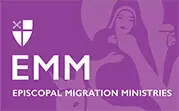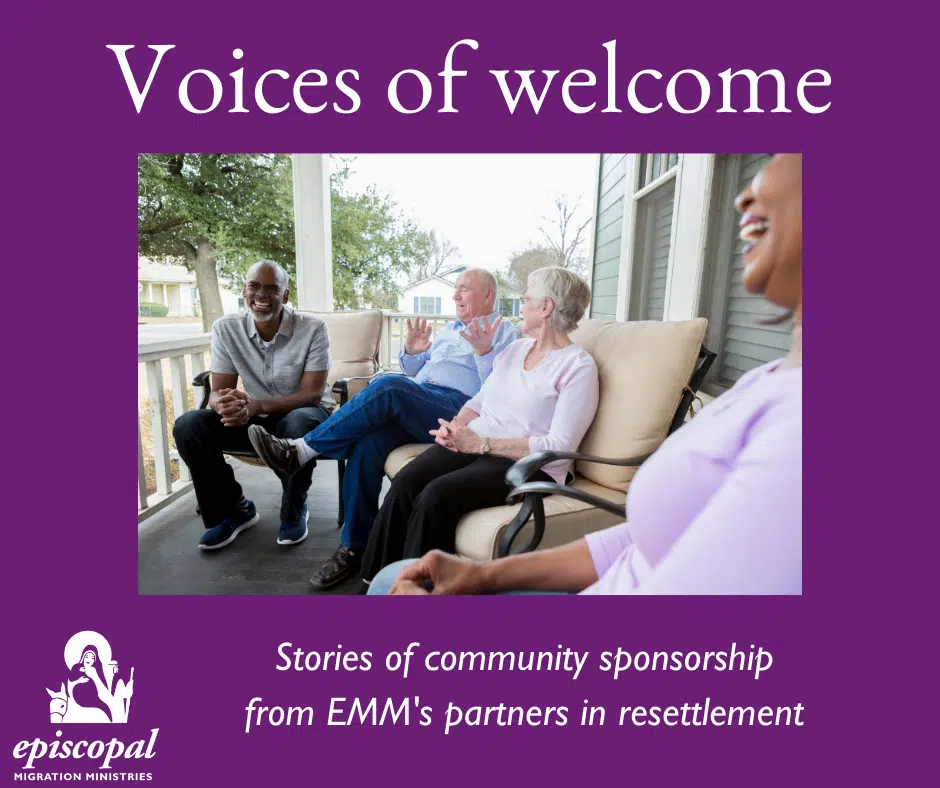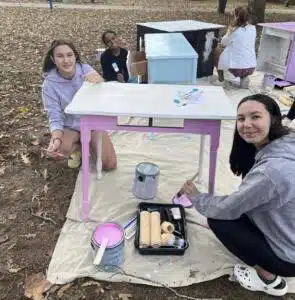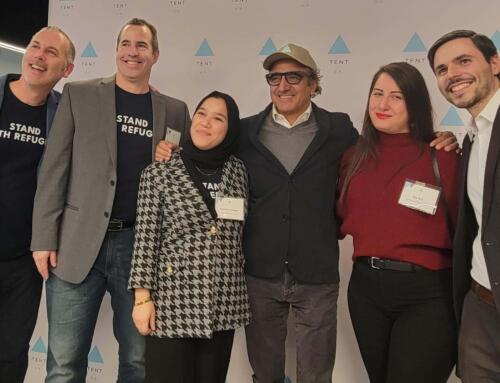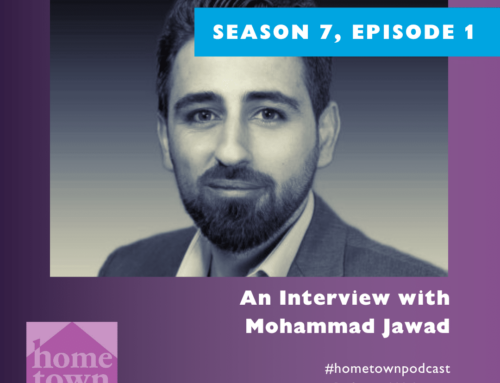This is Part 3 of a series of posts about community sponsorship as practiced by one of EMM’s affiliates, Interfaith Refugee Ministry, in New Bern, NC. Read Part 1 and Part 2.
Resettlement agencies want to have co-sponsors for many reasons, including to help clients get to know people and parts of the community beyond the agency itself. But how do they find potential partners?
How does an affiliate identify and recruit groups willing to serve as sponsors?
Under current federal rules, refugees with a U.S. tie must be resettled within 100 miles of an affiliate, and those without a U.S. tie must be placed within 50 miles of the affiliate office, unless special dispensation is granted. For affiliates, this rule creates a radius within which to look for potential community sponsors.
Since Interfaith Refugee Ministry (IRM) was created as a ministry of the Episcopal Diocese of Eastern Carolina, its staff initially looked to Episcopal churches across the region to serve as sponsors. But over time, IRM has developed relationships with churches of various denominations within its “service area,” including Baptist, Presbyterian, Methodist, and Seventh Day Adventist congregations.
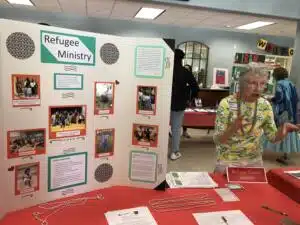
St. James UMC in Greenville, NC and Christ Episcopal Church of New Bern are two of the area churches that have served as co-sponsors for newly arrived refugee families.
After identifying churches that might be interested in welcoming newly arrived refugees, IRM staff try to talk with members of the congregation about what is involved in co-sponsoring a family. Amanda Norwood, IRM’s Community Outreach and Volunteer Coordinator, notes that this requires persistence:
Since the pandemic, churches have been slowly getting their programming back. I often have to speak with different people from a congregation multiple times to get them on board. Some churches will do a collection as a way to re-introduce us to a congregation or offer to collect specific items newcomers need. We give them time to think about what they want to do.
There are many ways to support newcomers, and IRM staff recognize that offering a one-time financial donation or a clothing drive may be a first step, leading to deeper engagement over time. Given this variability in support, many affiliates have adopted terms that recognize distinct levels of sponsorship: co-sponsors, community sponsors, “welcome teams,” and so on.
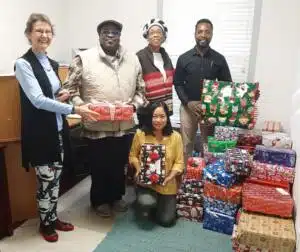
Members of the West Street Christian Church of New Bern, led by Rev. R.E. Midgette, Sr. (left), generously provide Christmas presents for children in households served by IRM. St. James Episcopal Church in Wilmington (right) has also been a generous supporter of IRM over the years.
The federal government has gradually standardized parameters of resettlement (so that the work done across agencies can be compared). In recent years, guidelines for the federal Reception and Placement program have stated that to be considered a “co-sponsor,” a congregation or other community group must take responsibility for “8 or more core services” required. While affiliates gladly accept any support from their community, it is particularly gratifying to find groups willing to serve as co-sponsors during the initial 90-day period when new households’ needs are greatest.

IRM executive director Susan Husson (second from left) gratefully accepts donations from a community partner and applauds the efforts of students who help update home furnishings with fresh paint.
When a community group agrees to be a co-sponsor, how are they prepared for this role?
Potential co-sponsors must complete an application, have background checks and sign a code of conduct. After they learn about the core services provided to refugees under the Reception and Placement program, they are given time to consider which services they want to take responsibility for. They sign a co-sponsor commitment form, a non-legally binding memorandum of understanding that clarifies their role and notes that the affiliate is ultimately responsible for ensuring that clients receive all mandated services. Depending on the services a co-sponsor group has chosen to provide, they may need further guidelines from the affiliate. Only after a co-sponsor group has received this training are they assigned to a specific household, before they arrive in the community.
While co-sponsor groups naturally focus their energy on being ready to help newcomers feel at home, it is vital to realize that this is a unique kind of relationship. At the same time as co-sponsors welcome and get to know newcomers, they need to respect their privacy and independence. Co-sponsors are asked to invest intensively in the well-being of a household for a few months. However, since the end goal is economic self-sufficiency and independence, co-sponsors need to envision a day when their support and presence are no longer needed. This can be tricky, especially for groups doing this for the first time. Affiliate staff, having worked with countless clients and witnessed the cycle repeatedly, try to prepare co-sponsors for this part of the process. As Amanda Norwood explains,
We stress that after about six months, they need to let the family go. We want them to be able to say, ‘Ok, we helped this family,’ and then take a breather. We’ve realized we have to train groups from the beginning to set boundaries and plan for off-boarding.
Ultimately, co-sponsors learn how to play this role effectively through their on-going interactions with affiliate staff and the individuals and families to whom they are assigned.
In the next part of this series, we will see what inspired one congregation in New Bern, NC to apply to serve as co-sponsors, and what they learned along the way.
